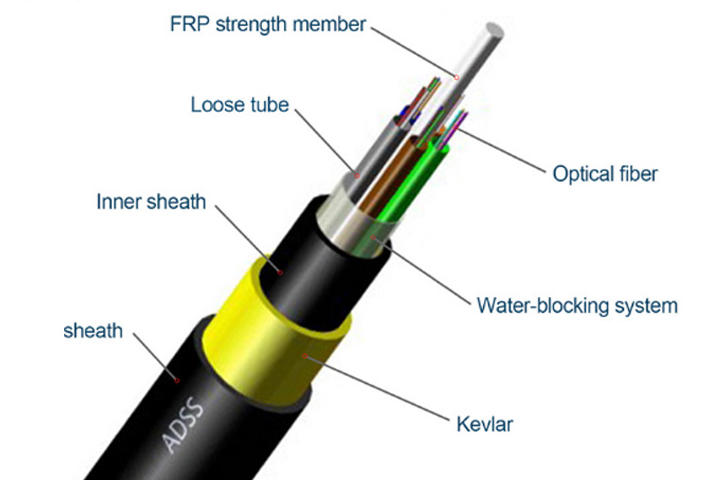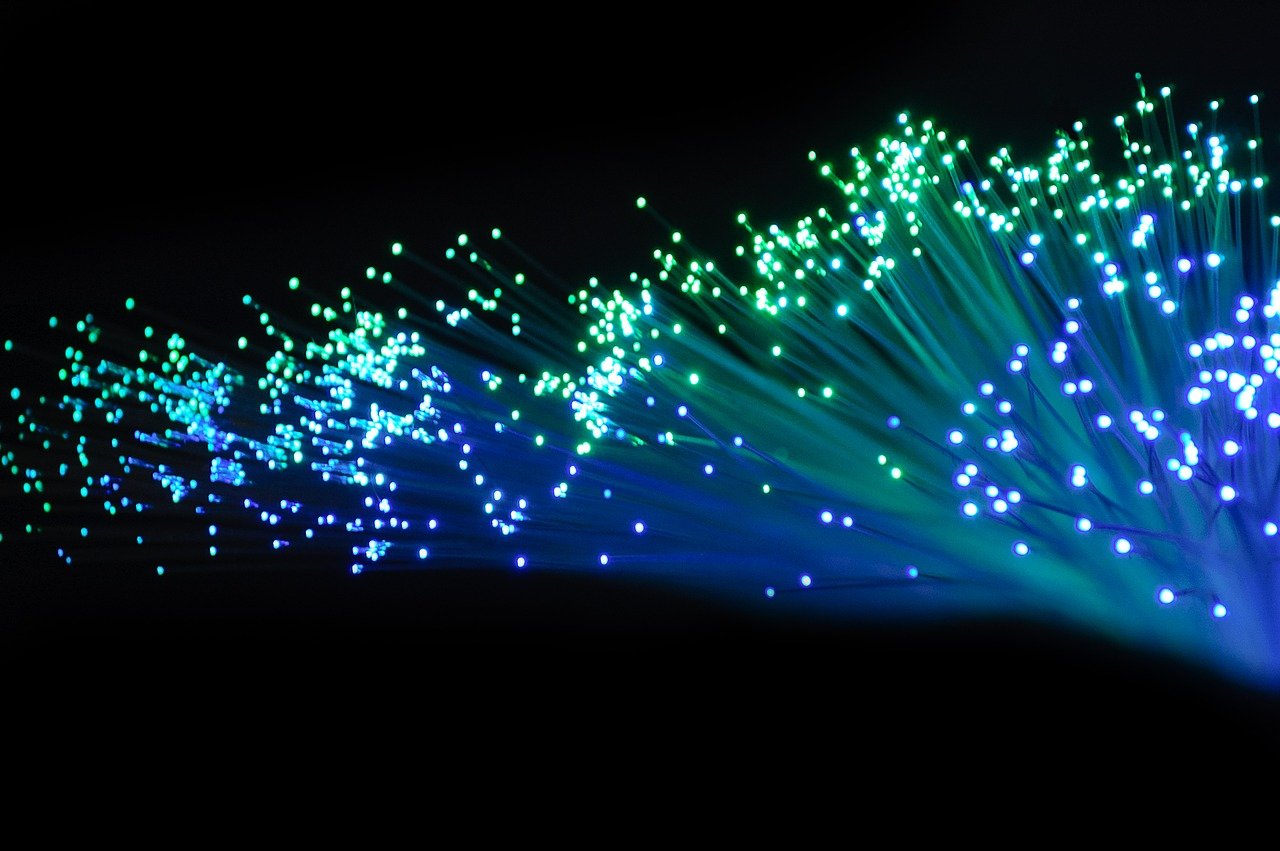Exploring ADSS Fiber Optic Cables: Applications and Key Features

Unveiling ADSS Fiber Optic Cables
Simplified Installation Process
ADSS technology offers a simplified installation process, making it an efficient choice for various applications. The key features of ADSS cables contribute to their ease of installation, ensuring a streamlined setup. Understanding the installation process is essential for maximizing the benefits of ADSS technology, especially in scenarios where quick deployment is crucial.
Maintenance Tips
Proper maintenance is vital for ensuring the longevity and performance of ADSS fiber optic cables. By adhering to essential maintenance tips, such as regular inspections and upkeep, users can optimize the reliability and functionality of ADSS technology, minimizing potential disruptions in communication networks.
Superiority Over Aerial Cables
ADSS cables exhibit clear advantages over traditional aerial cables, offering enhanced reliability and versatility. Their all-dielectric self-supporting nature eliminates the need for additional support structures, streamlining installation and reducing overall infrastructure costs.
Reliability and Versatility
The reliability and versatility of ADSS fiber optic cables make them suitable for diverse applications. From telecommunications to urban and rural environments, ADSS technology excels in delivering consistent performance across various settings.
Telecommunication Industry
In the telecommunication industry, ADSS fiber optic cables play a pivotal role in enhancing network efficiency. Their reliable performance and ease of installation make them an ideal choice for supporting high-speed data transmission and communication infrastructure.
Urban and Rural Applications
ADSS technology finds extensive applications in both urban and rural environments, contributing to the development of modern infrastructure. Its adaptability to different settings makes it a valuable asset in expanding connectivity and supporting evolving technological needs.
Maintenance Best Practices
Implementing best practices for maintaining ADSS fiber optic cables ensures optimal performance and durability. Regular inspections, adherence to manufacturer guidelines, and proactive maintenance measures are crucial for sustaining the integrity of ADSS installations.
Weather Resistance
The weather-resistant features of ADSS cables enable them to withstand various environmental conditions with minimal impact on performance. This resilience makes ADSS technology a reliable choice for deployments in diverse geographical locations.
Appreciating the significance of ADSS fiber optic cables in modern applications highlights their potential for future advancements across various industries. Embracing their reliability and adaptability contributes to fostering innovation within evolving infrastructures.
Streamlining ADSS Installation
Simplified Installation Process
When it comes to the installation of ADSS cables, the process is designed for efficiency and simplicity. The setup of ADSS cables involves a straightforward approach, allowing for quick and seamless deployment in various environments. Proper installation techniques are essential to ensure that the cables are positioned securely and can support the intended infrastructure effectively.
Maintenance Tips
Understanding the essential maintenance practices for ADSS fiber optic cables is crucial for maximizing their longevity and performance. Regular inspections, adherence to manufacturer guidelines, and proactive upkeep are fundamental aspects of maintaining ADSS cables. By prioritizing proper maintenance, users can safeguard the integrity of their deployment and ensure consistent functionality over time.
ADSS Advantages Unveiled
Superiority Over Aerial Cables
When comparing ADSS cables to traditional aerial cables, the advantages of ADSS technology become evident. Unlike aerial cables that require additional support structures, ADSS cables are all-dielectric self-supporting, eliminating the need for extra hardware. This not only simplifies the installation process but also reduces infrastructure costs significantly. Additionally, the lightweight nature of ADSS cables makes them easier to handle during deployment, further enhancing their practicality in various scenarios.
The benefits of using ADSS technology extend to its resistance to electromagnetic interference and radio frequency interference, ensuring reliable signal transmission even in challenging environments. These strengths make ADSS cables a preferred choice for applications where uninterrupted communication is essential, such as in telecommunications and data networks.
Reliability and Versatility
Exploring the reliability and versatility of ADSS fiber optic cables reveals their suitability for a wide range of applications. The all-dielectric design not only enhances durability but also makes them resistant to corrosion and environmental degradation. This resilience ensures consistent performance across diverse settings, from urban landscapes to rural areas.
The strengths of ADSS technology lie in its adaptability to various environmental conditions, including extreme temperatures and high winds. This adaptability makes ADSS fiber optic cables an ideal solution for deployments where weather fluctuations are a concern, providing a reliable and robust communication infrastructure.
ADSS in Everyday Scenarios
Telecommunication Industry
Within the telecommunication industry, ADSS technology plays a pivotal role in facilitating efficient and reliable communication networks. The utilization of ADSS fiber optic cables ensures seamless data transmission and connectivity, contributing to the overall performance of telecommunication infrastructure. Whether in urban areas with high population density or rural regions with limited access to traditional communication channels, ADSS cables offer versatile solutions for establishing and maintaining robust telecommunication networks.
Urban and Rural Applications
The applications of ADSS technology extend across both urban and rural environments, addressing the distinct needs of modern infrastructure. In urban settings, where space optimization and rapid deployment are essential, ADSS fiber optic cables provide a compact and efficient solution for supporting high-speed data transfer and telecommunications. Meanwhile, in rural areas, where traditional cable installations may be impractical or cost-prohibitive, ADSS cables offer a reliable means of expanding connectivity and enabling advanced communication services.
Ensuring ADSS Performance
Maintenance Best Practices
When it comes to ensuring the optimal performance and longevity of ADSS technology, adhering to maintenance best practices is paramount. Regular maintenance routines, including inspections and proactive upkeep, are essential for preserving the integrity of ADSS fiber optic cables. By prioritizing thorough care and attention to detail, users can mitigate potential issues and safeguard the consistent functionality of their ADSS installations.
Implementing a structured upkeep schedule in accordance with manufacturer guidelines is fundamental for sustaining the reliability of ADSS cables. This includes periodic assessments of cable integrity, connectors, and support hardware. Additionally, conducting routine checks for environmental factors that may impact performance, such as exposure to extreme temperatures or inclement weather, further contributes to the overall effectiveness of ADSS technology.
Weather Resistance
Understanding the weather-resistant features of ADSS cables is crucial for comprehending their resilience in various environmental conditions. The all-dielectric nature of ADSS technology enables it to withstand harsh weather elements without compromising performance. Whether facing high winds, ice loading, or temperature fluctuations, ADSS fiber optic cables demonstrate remarkable durability and stability. This inherent weather resistance makes them an ideal choice for deployments in diverse geographical locations where environmental factors pose significant challenges.
Embracing ADSS Technology
Embracing the Future of Communication Infrastructure
As industries continue to evolve, the significance of ADSS technology in modern applications becomes increasingly apparent. The all-dielectric self-supporting nature of ADSS fiber optic cables offers a glimpse into the future of communication infrastructure. Embracing the reliability and adaptability of ADSS cables paves the way for seamless integration into various industries, from telecommunications to smart city initiatives.
Recognizing the potential of ADSS technology for future advancements
Appreciating the significance of ADSS fiber optic cables in modern applications
Embracing the reliability and adaptability of ADSS cables in various industries
See Also
Selecting the Best Cable for Long Span Applications: ADSS Fiber vs. Others
Advantages of ADSS Fiber Optic Cables for Overhead Power Lines
The Impact of ADSS Fiber Optic Dead End Kits in Network Cabling


